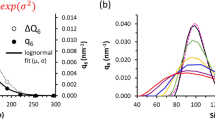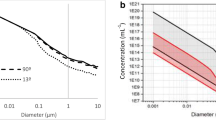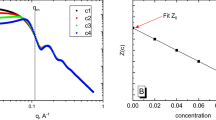Abstract
Metal oxide nanoparticles are increasingly being used to prepare new nanocrystaline materials. By controlling formulations of multicomponent metal oxides; crystal shape, structure and surface properties important in the design of new materials are gaining acceptance for many applications. Metal oxide composites are being used to design new electronic, magnetic and optical properties into material structures. Often these are formulated and processed in slurries or aqueous suspensions. A key parameter of controlling the design of such colloidal nanoparticle systems is their particle size. There are different methods by which a particle size can be obtained. Comparing stated dimensions from one method with those from another must be approached with caution: distributions in terms of volume, number or scattering intensity usually produce vastly differing results – despite expressing the exact same physical situation. Another fundamental colloidal characteristic is the zeta potential. This parameter effectively quantifies electrostatic stabilization, and can be used in formulation development to avoid instability as a result of particle-particle attraction.
Both size and zeta potential are easily measured by light scattering. Small amounts of aggregates are quickly detected by dynamic light scattering (DLS). The zeta potential is rapidly measured by electrophoretic light scattering (ELS). As an example of a typical metal oxide, data for TiO2 nanoparticles are presented.
Light scattering is a versatile measurement technique and ideally suited as a metrology of choice for size and stability quantification of nano-sized materials.
Similar content being viewed by others
References
A. Morfesis and D. Fairhurst, “Physicochemical characterization of nanosize zinc oxide and titanium dioxide used as UVR sunscreen agents in cosmetic formulations”, Nanotech 1 (NSTI, 2005) pp.800–803.
C. Chouly, D. Pouliquen, I. Lucet, J.J. Jeune and P. Jallet, “Development of superparamagnetic nanoparticles for MRI: effect of particle size, charge and surface nature on biodistribution,” J. Microencapsul. 13(3), 245–55 (1996).
ISO13321:1996 Particle size analysis - Photon correlation spectroscopy, International Organization for Standardization (1996)
M.T. Connah, M. Kaszuba and A. Morfesis, “High Resolution Zeta Potential Measurements: Analysis of Multi-component Mixtures,” J. Disp. Sci. Technol., 23(5), pp. 663–669 (2002).
R.H. Müller, “Zetapotential und Partikelladung in der Laborpraxis,” (WVG Stuttgart, 1996) p52.
G. Mie, “Beiträge zur Optik trüber Medien, speziell kolloidaler Metallösungen,” Annalen der Physik 330(3) pp.377–445 (1908).
Author information
Authors and Affiliations
Rights and permissions
About this article
Cite this article
Nobbmann, U., Morfesis, A. Characterization of Nanoparticles by Light Scattering. MRS Online Proceedings Library 1074, 10741045 (2008). https://doi.org/10.1557/PROC-1074-I10-45
Received:
Accepted:
Published:
DOI: https://doi.org/10.1557/PROC-1074-I10-45




